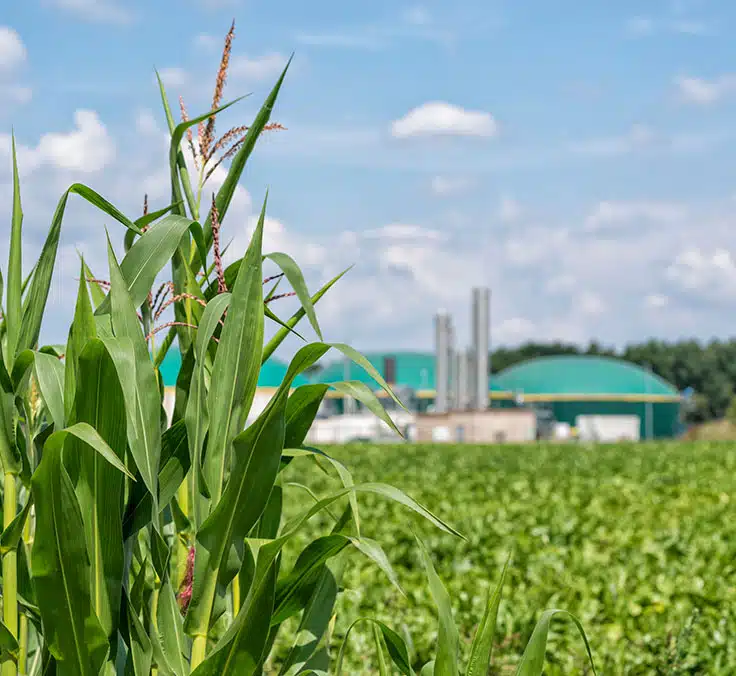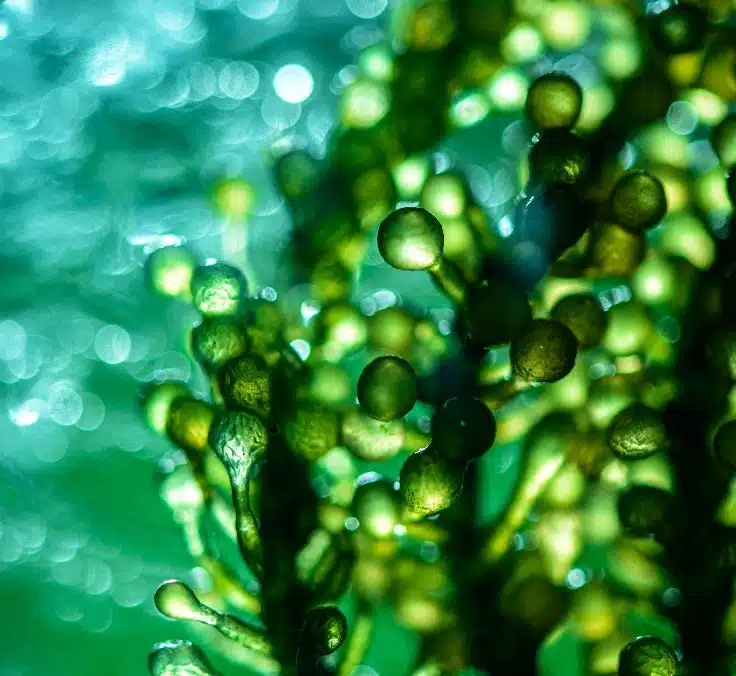SUSTAINABILITY| 06.05.2024
Biomethane: the green gas that reaches where electricity can't
Biometane is a type of biogas produced from biodegradable waste. It stands out for its versatility and storage capacity, as well as playing a key role in the European energy transition.
Industry and public administration, along with society at large, are coming together to tackle one of the most crucial and defining challenges of the 21st century: achieving the energy transition that will make the world a more environmentally friendly place. Hundreds of researchers from around the globe are diligently working to find the key that will drive the model change we eagerly anticipate, a change that will come hand in hand with green energies. Among them, biomethane stands out as one of the most effective. What is this green gas? What is it used for? Does biogas come from organic waste at home? What is the situation of biomethane in Spain?
Biomethane comes from biogas, that is, the gas resulting from the anaerobic digestion of biodegradable waste, yielding a gas with methane, carbon dioxide, and impurities. This gas undergoes a conditioning process whereby impurities are removed, and an enrichment process through which CO2 levels are reduced while methane levels are increased: what remains afterward is biomethane.
"With biomethane, we have a gas equivalent to natural gas, so it can be used to fuel a car, heat a house, and for industrial purposes."
In this sense, its raw material consists of organic waste, such as food leftovers in households, potato skins, or banana peels. "Also, there are slurries, livestock excreta, from which biomethane can be produced as a solution, not only from an energy perspective but also from an environmental standpoint," notes Xavier Flotats, emeritus professor of environmental engineering at the Polytechnic University of Catalonia. In addition to those, there are sludges from wastewater treatment plants, the food industry, such as canneries and industrial slaughterhouses, and other factories like breweries, flour mills, and animal feed producers.
The versatility of biomethane
"At the outset, with biomethane, we have a gas equivalent to natural gas, so it can be used to fuel a car, heat a house, and for industrial purposes," notes the expert. Thus, biomethane emerges as one of the optimal green energies that can reach places where electrification is more challenging. For example, heavy transportation, as well as industrial processes that occur at high temperatures.
One of the great characteristics of biomethane is its versatility, as emphasized by Flotats: "What's interesting is that this gas can also be stored. The European gas network is 1,100 terawatt-hours, while the electrical grid doesn't provide that storage capacity," he adds. Therefore, when renewable electrical energy, which depends on external weather phenomena like wind or sun, is lacking, biomethane emerges as one of the best alternatives.”
Dozens of plants projected in Spain
In this regard, Flotats believes that in Spain, there still prevails a certain "institutional fear" about financing something that should already be on the table. Without going further, in France, gas companies and the government have reached an agreement to set the price of megawatt/hour for about 15 years: "This strengthens the system because small livestock farmers can come together to create a biomethane plant. In other words, it promotes private initiative thanks to the security provided by the state," says Flotats. In fact, in France, an average of about three biomethane plants are inaugurated each week.
In Spain, there still prevails a certain "institutional fear" about financing something that should already be on the table.
In Spain, however, various lines of subsidies have been approved, but they are solely oriented towards the construction of the plants, with nothing related to production. This emeritus professor believes that "we have a lot of potential, and more engineering companies with projects are emerging all the time." "Thanks to having a leading agri-food industry in Europe, we have one of the greatest potentials on the continent for the development of this technology. Not only will it allow us to create a national and independent renewable gas industry, but it will also boost the growth of those agri-food companies that have limited their expansion due to not being able to provide a sustainable solution for their waste," explains Fernando García de la Santa, infrastructure fund manager at MAPFRE.
MAPFRE multiplies plants by five
For all these reasons, it seems logical that large companies also invest in this type of green energy. MAPFRE launched the MAPFRE Energías Renovables II fund in June 2023, with an ambitious goal matching the challenge we face: to invest in the development of between 20 and 25 plants in Spain within a five-year period, which will create a total of 70 permanent and 240 indirect jobs.
Putting the project into the context of the country’s reality, once it takes effect, the investments made by MAPFRE will have allowed the capacity of this green gas in Spain to be multiplied by five compared to the current installed capacity.
Now, the fund has received support from the Official Credit Institute (ICO), which through its specialized private equity investment arm, will invest 15 million euros. The project, which represents a clear example of the company’s commitment to socially responsible investments, focuses on various crucial axes that enhance the energy transition: planet decarbonization, energy crisis, high dependence on natural gas imports, and investment in rural areas through agriculture and livestock farming. “It’s a very exciting project that fulfills all the ingredients that excite us as a company: it has a strong social focus, as it will create jobs in rural areas with fewer opportunities, providing a sustainable and profitable solution for livestock farmers and agriculturists,” says García de la Santa. “Not only does it increase the country’s energy independence, but it also creates a biofertilizer industry essential for providing local decarbonization solutions to the field, in a clear example of a circular economy. Lastly, it’s a highly profitable business, with a robust business model thanks to the development of the origin guarantee system, which provides investors with clear visibility on cash flows.”
Since its launch, the MAPFRE Energías Renovables II fund has been developing a total of nine plants across Extremadura, Castile and León, and Madrid. It is expected that the construction phase of these projects will begin during the last quarter of this year and the beginning of 2025, with their entry into operation in 2025. In addition, IAM Carbonzero has currently identified 20 projects in the origination phase in the regions of Andalusia, Aragon, Catalonia, Castilla-La Mancha, Murcia, and Galicia.
RELATED ARTICLES:




